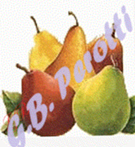 |
CGI debug file
|

| ||||||
| ||||||||
| ||||||||
| |||||||||||||||||
|
In debugging your CGI programs you may hit cases where you would need to see how
In Mel's service program facilities exist to trace input/output html
and here is how you can implement them to debug your CGI programs.
1. File CGIDEBUG Mel's service program may trace the input string and the response html on a file named CGIDEBUG. You implicitly duplicate it from library cgidev2 to your object (production) library when you use command setcgilib.
2. Start/Display/End CGIDEBUG
Warning
At the end of your debugging session you
must remember to end your html trace.
If you leave the trace on,
sooner or later you will fill up file
CGIDEBUG, and your CGI will start bumping out!!!
3. Clear the CGIDEBUG file You may need to clear the CGIDEBUG files from time to time. You cannot use the clrpfm command, because these files are locked by the HTTP server. You should instead use command cgidev2/clrcgidebug (use F4 to specify the library name).
A tip
CGIDEBUG is far from being your ultimate debugging
facility for CGIs. Please read page
CGI debugging tips.
|